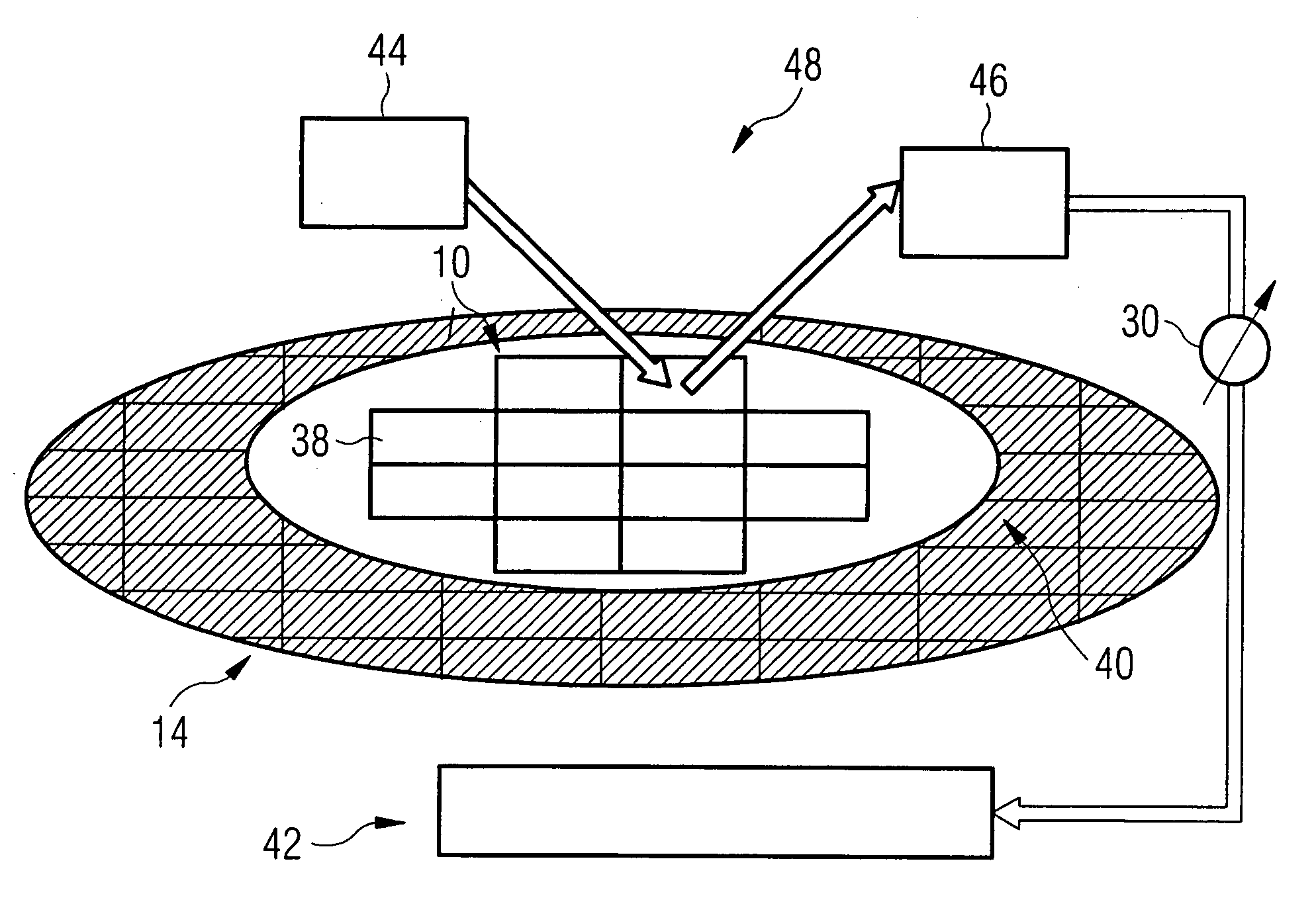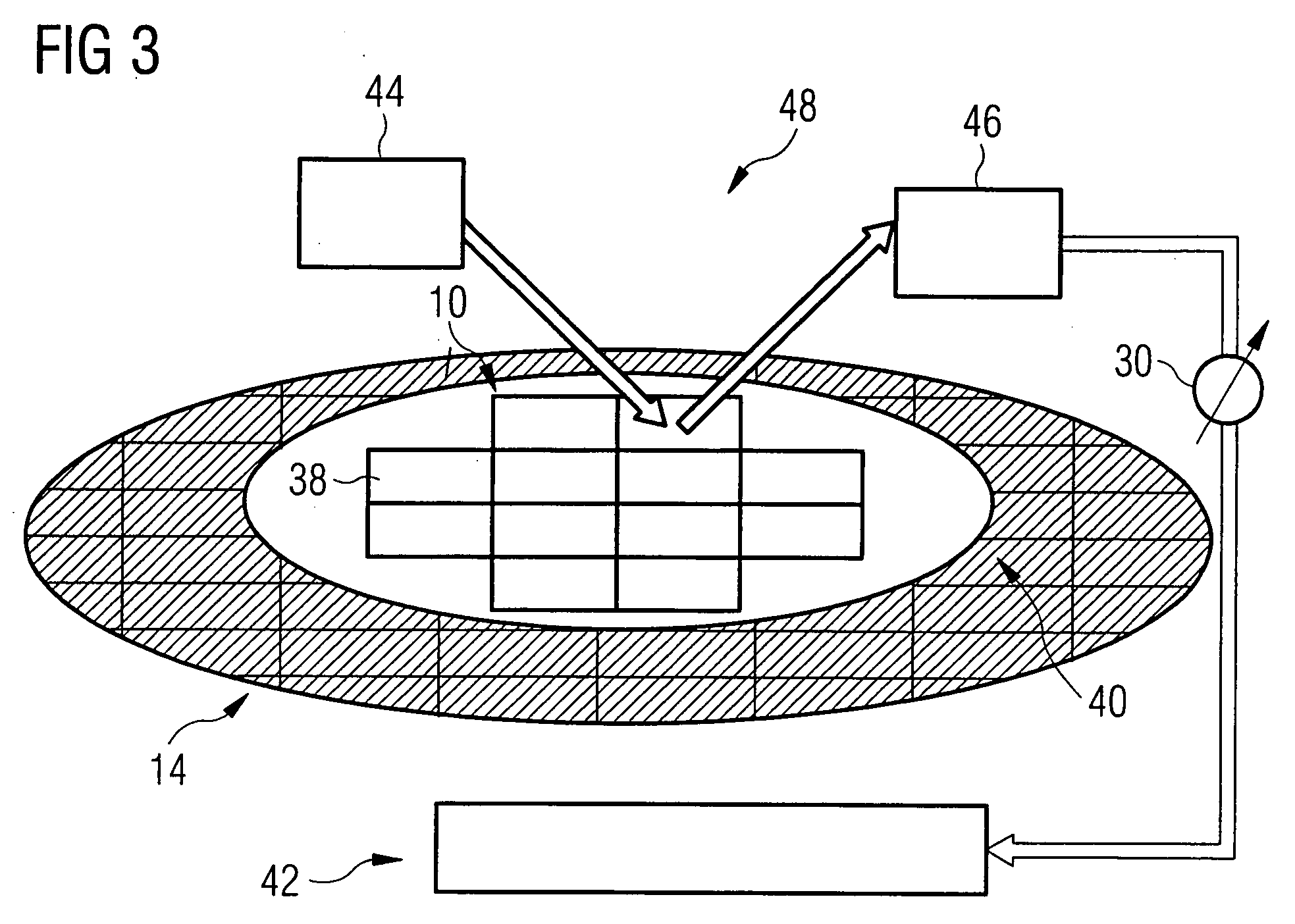Exposure device for immersion lithography and method for monitoring parameters of an exposure device for immersion lithography
an exposure device and immersion lithography technology, which is applied in the field of monitoring parameters of the exposure devices for immersion lithography, can solve the problems of temperature change in the resist layer, alteration of the refractive index of the immersion liquid, etc., and achieve the effect of simple and cost-effective determination
- Summary
- Abstract
- Description
- Claims
- Application Information
AI Technical Summary
Benefits of technology
Problems solved by technology
Method used
Image
Examples
Embodiment Construction
[0038] The invention is explained below by way of example on the basis of an exposure device for immersion lithography and on the basis of a method for monitoring parameters of the exposure device for immersion lithography for producing an integrated circuit. However, the invention can also be applied to the production of other objects in the case of which the intention is to effect patterning with a pattern with a very high resolution.
[0039]FIG. 1 shows an exposure device 5 for immersion lithography. The exposure device 5 includes a substrate holder 14, on which a semiconductor wafer 10 is placed. The semiconductor wafer 10 is provided with a resist layer 16 on a front side 12 of the semiconductor wafer. The resist layer 16 is applied by spinning-on, by way of example. The exposure device 5 further includes a lens 20, which projects light from a light source 32 onto the resist layer 16 of the semiconductor wafer 10. The light source 32 emits light having a wavelength of 248 nm or ...
PUM
 Login to View More
Login to View More Abstract
Description
Claims
Application Information
 Login to View More
Login to View More - R&D
- Intellectual Property
- Life Sciences
- Materials
- Tech Scout
- Unparalleled Data Quality
- Higher Quality Content
- 60% Fewer Hallucinations
Browse by: Latest US Patents, China's latest patents, Technical Efficacy Thesaurus, Application Domain, Technology Topic, Popular Technical Reports.
© 2025 PatSnap. All rights reserved.Legal|Privacy policy|Modern Slavery Act Transparency Statement|Sitemap|About US| Contact US: help@patsnap.com



